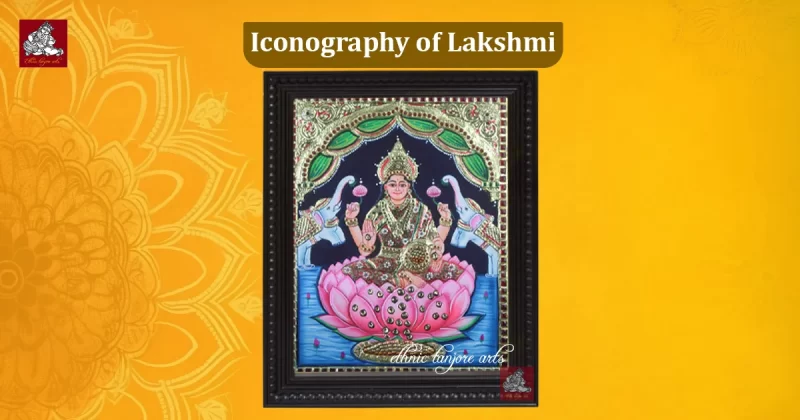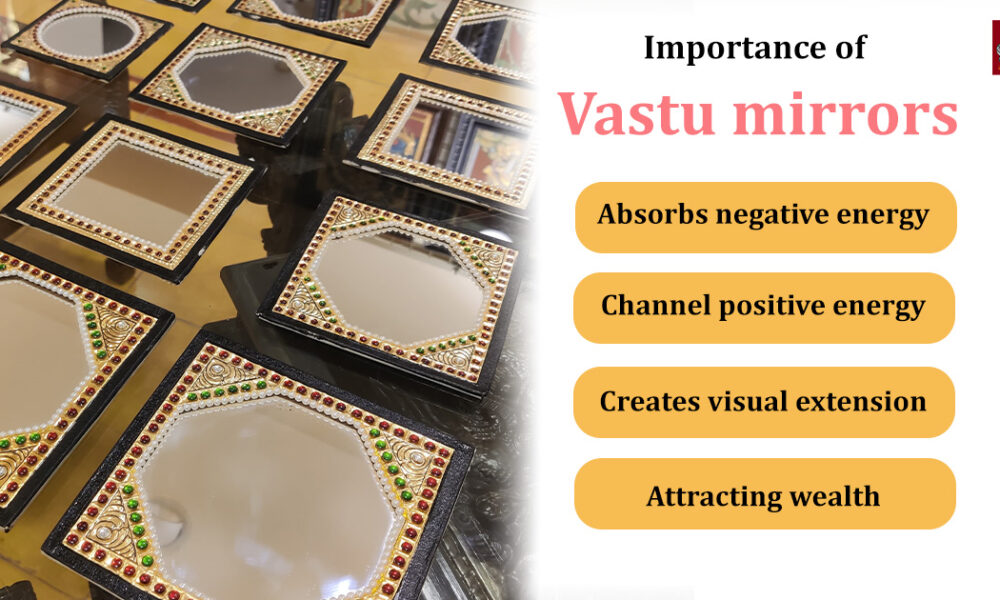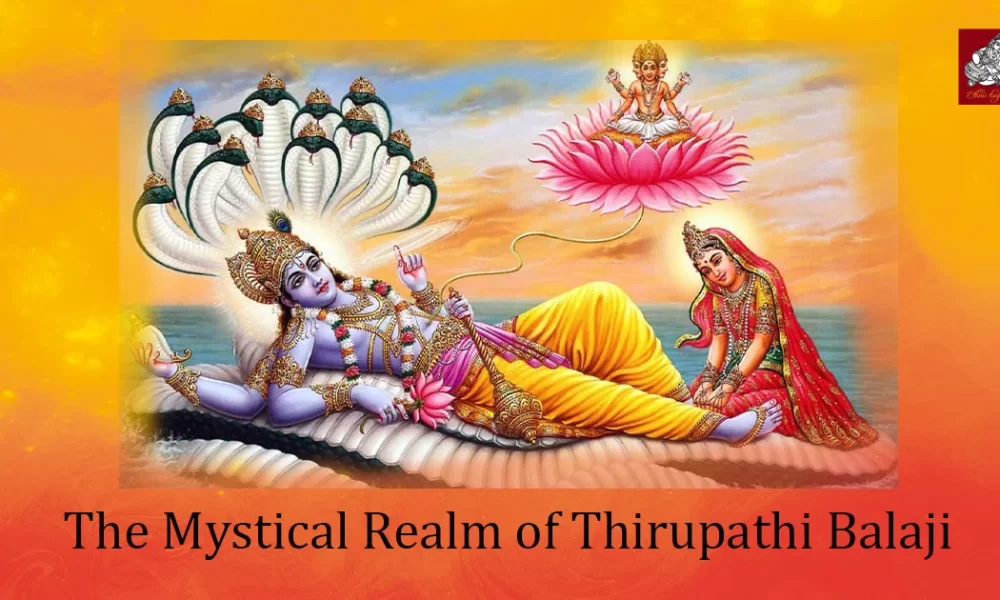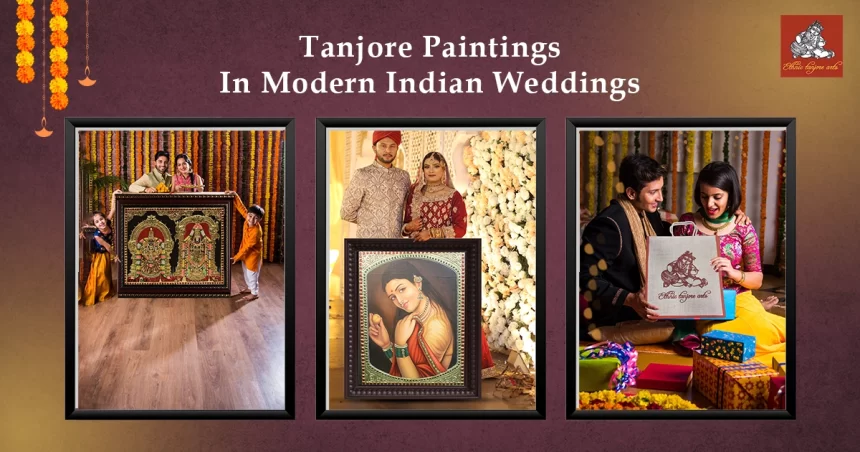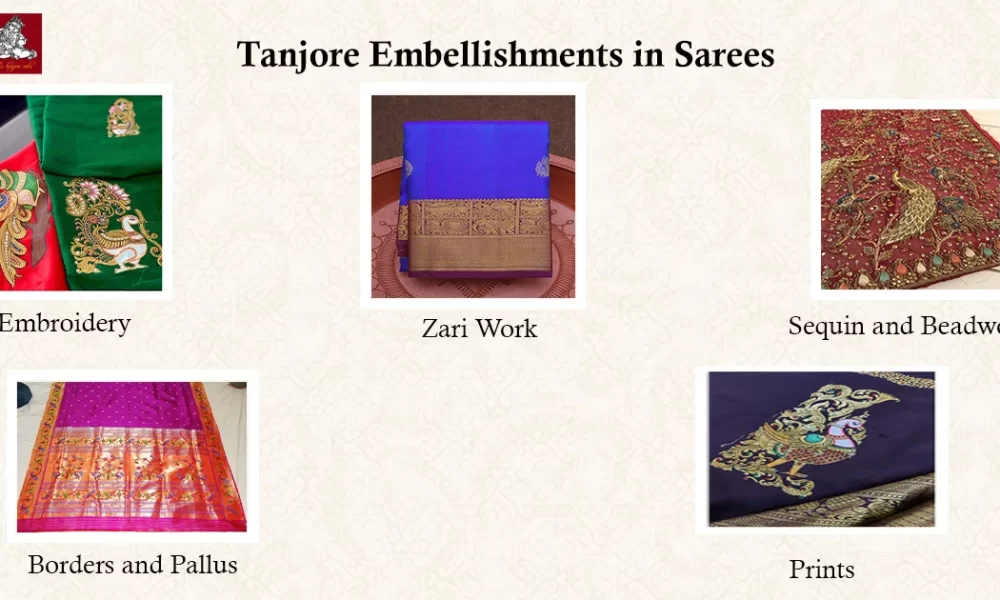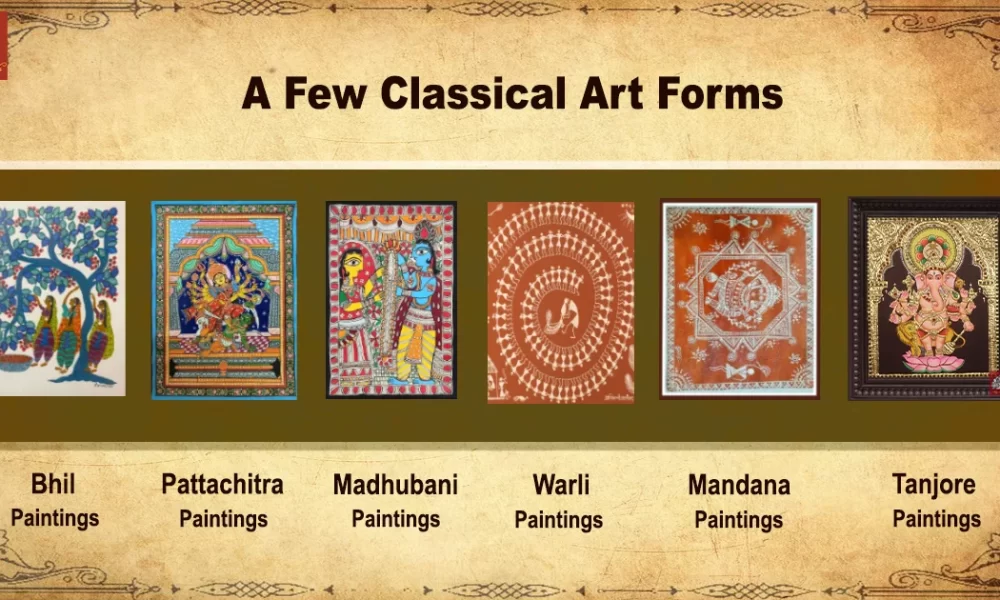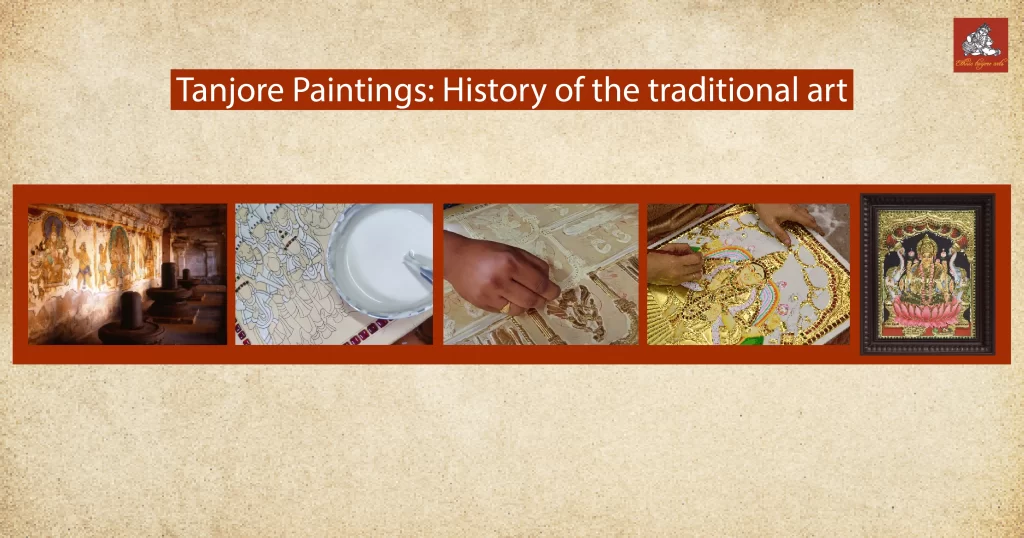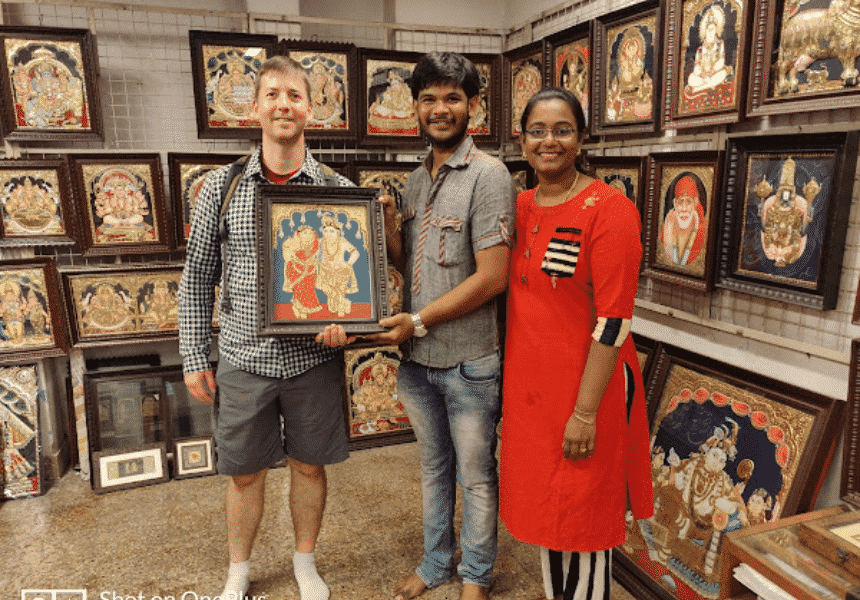Tanjore paintings, also known as Thanjavur Painting, are known for their rich cultural and religious painting heritage. Tanjore Painting or Tanjore Art is the modern term for the classical, elaborate, and opulent painting style that originated in Tanjore, Tamil Nadu (also known as Thanjavur).
In this blog, we are going to cover one of the Hindu religion’s gods called Lakshmi, which is one of the famous paintings from Tanjore painting.
Origin and History:
A Tanjore painting of the goddess Lakshmi is a captivating blend of art and devotion. This traditional South Indian art form hails from the regal city of Thanjavur and boasts an illustrious history dating back to the 16th century. The intricate patterns and models are crafted with semi-precious stones to evoke an opulent aura transporting viewers to a world of divine abundance.
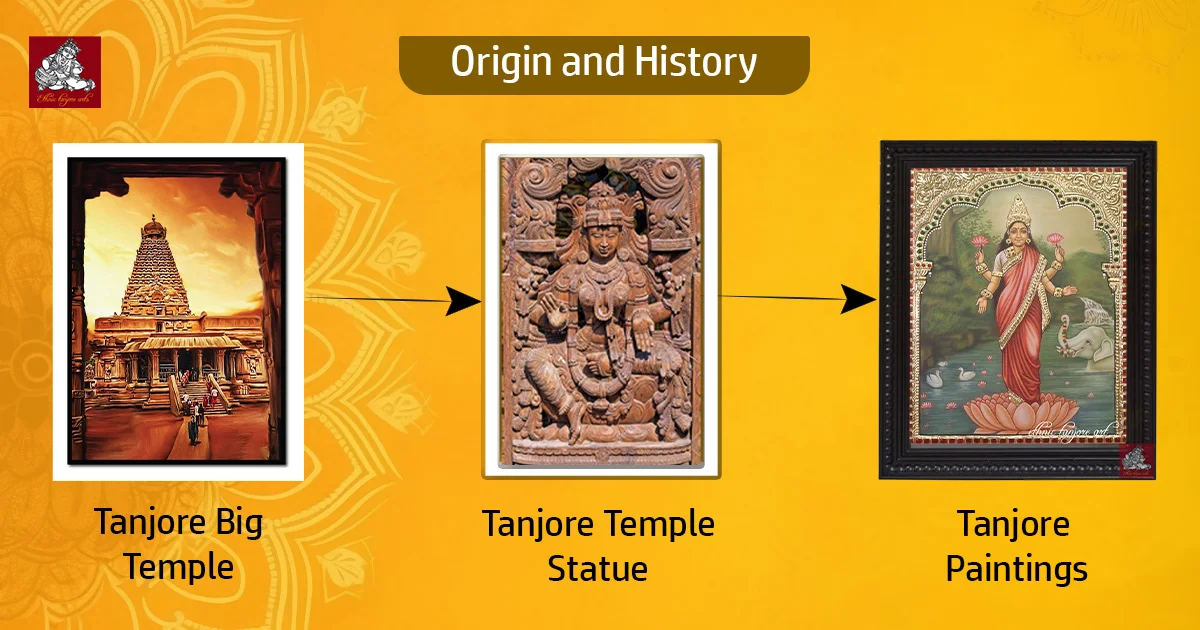
The Nayakas of Thanjavur who were ardent supporters of arts and culture were the rulers during the emergence of Thanjore paintings. The embossed work of paintings lakshmi was appreciated globally because the work of Emboss was invented in the 16th century.
The Iconography of Lakshmi:
Lakshmi is usually shown seated or standing on a lotus, Lakshmi is depicted holding a lotus in one or both hands. Hinduism and other Indian cultures have symbolic implications associated with the lotus. In the Vedic context, it stands for knowledge, self-realization, and liberation; in the Tantra (Sahasrara) context, it signifies reality, consciousness, and karma (‘task, action’). The lotus, a flower that blooms in both muddy and pure water, likewise represents purity, no matter what kind of environment it thrives in. It serves as a reminder that goodness and wealth can flourish without being impacted by evil in the environment.
Artistic Innovation:
Under the patronage of the Thanjavur Nayakas, the ancient art form known as Lakshmi Tanjore painting emerged in the town of Thanjavur (previously Tanjore) in Tamil Nadu, India, around the 16th century. Rich colors, complex patterns, and decorations like glass beads, gold foil, and semi-precious stones are characteristics of this painting style.
Lakshmi Tanjore’s paintings are innovative from an artistic standpoint in multiple ways. Such as the use of Rich Materials like vivid, rich colors created from natural pigments is one of the paintings of Tanjore that set them apart from other styles. To add opulence and ornateness to their paintings, artists also use gold leaf and precious and semi-precious stones.
Global Influence:
Tanjore paintings have globally influenced several fields such as Embossing works, Frame designing, Using gold foil for pasting works, semi-precious jewels for designing art, etc. Indian art during the 16th century, when the Vijayanagara Rayas deployed the Nayaka Governors to govern their vast realm in southern India, influenced Thanjavur painting. The Nayakas were literary and artistic patrons and philanthropists.
Tanjore painting developed and grew into the shape and style that we remember today. The figurines are filled with flat colors. Decorative borders, drapes, and arches are usually placed indoors.
Conservation Challenges:
Tanjore Lakshmi paintings are particularly difficult to save because of their special materials, craftsmanship, and cultural significance. Among the major issues facing conservation are:
Material Degradation: Tanjore paintings are prone to material degradation over time since they contain organic elements including wood, natural colors, and adhesives. Insect infestation, moisture, and weather conditions can cause the hardwood base to decay, and the pigments can fade or change color.
Loss of Embellishments: Glass beads, semi-precious stones, and gold foil are common embellishments seen in Tanjore paintings. These materials can break or come loose with time. One major difficulty facing conservationists is maintaining the integrity of these fine details.
Contemporary Revival:
Tanjore Lakshmi paintings are experiencing a modern renaissance due to a renewed interest in this age-old art genre among enthusiasts, collectors, and artists. Even though Tanjore painting has a long history, several factors, including shifting cultural preferences, industrialization, and the rise of alternative art forms, have contributed to its gradual fall in popularity over time.
But due to several causes, Tanjore paintings including those featuring the goddess Lakshmi—have gained popularity again in recent years. A lot of individuals, especially artists and art enthusiasts, want to maintain traditional art forms like Tanjore painting and re-establish a connection with their cultural heritage.
Conclusion:
In conclusion, Tanjore Lakshmi’s paintings are incredibly beautiful, captivating hearts with their exquisite artistry, deep meaning, and divine attraction that is beyond time and tradition. These paintings, which have their roots in centuries of creative tradition, continue to tell powerful stories of devotion, spirituality, and cultural diversity to audiences all around the world.
Tanjore Lakshmi paintings provoke awe and adoration with their vivid colors, sumptuous embellishments, and painstaking workmanship, transporting viewers into a world where gods and goddesses come to life in glorious splendor. Every brushstroke and shimmer of gold leaf is evidence of the artistry and commitment of the craftspeople who continue this age-old custom.

